Volvo V90 Recharge is a hybrid with charm, class and calming elegance
Volvo V90 Recharge plug-in hybrid adds eco credentials to the model’s existing design integrity, while the new Concept Recharge takes sustainability further
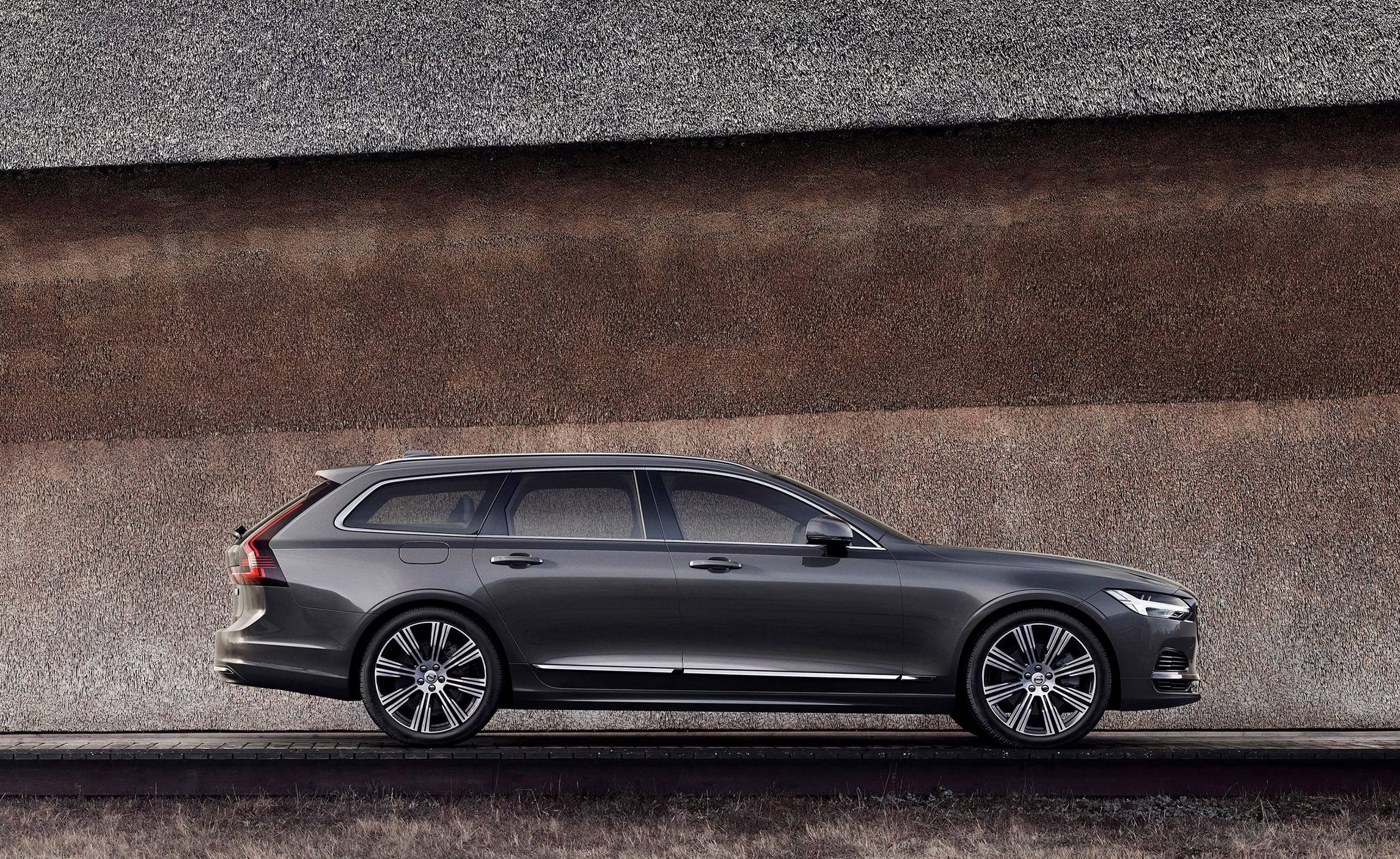
It says a lot for the design integrity of the Volvo V90 that it still looks fresh and modern after five years on the market. With only mild tweaks to the design, the V90 remains the epitome of the graceful modern estate car, just as its sister, the S90, represents the apogee of internally combusted saloon car design.
Penned by a team led by Thomas Ingenlath, shortly before he departed Volvo to become the first CEO of Polestar, Volvo’s spin-off performance EV brand, there’s not a line out of place. Even more impressively, the lines that are there further a convincing heritage that goes back to the very earliest Volvo models.
Volvo V90 Recharge
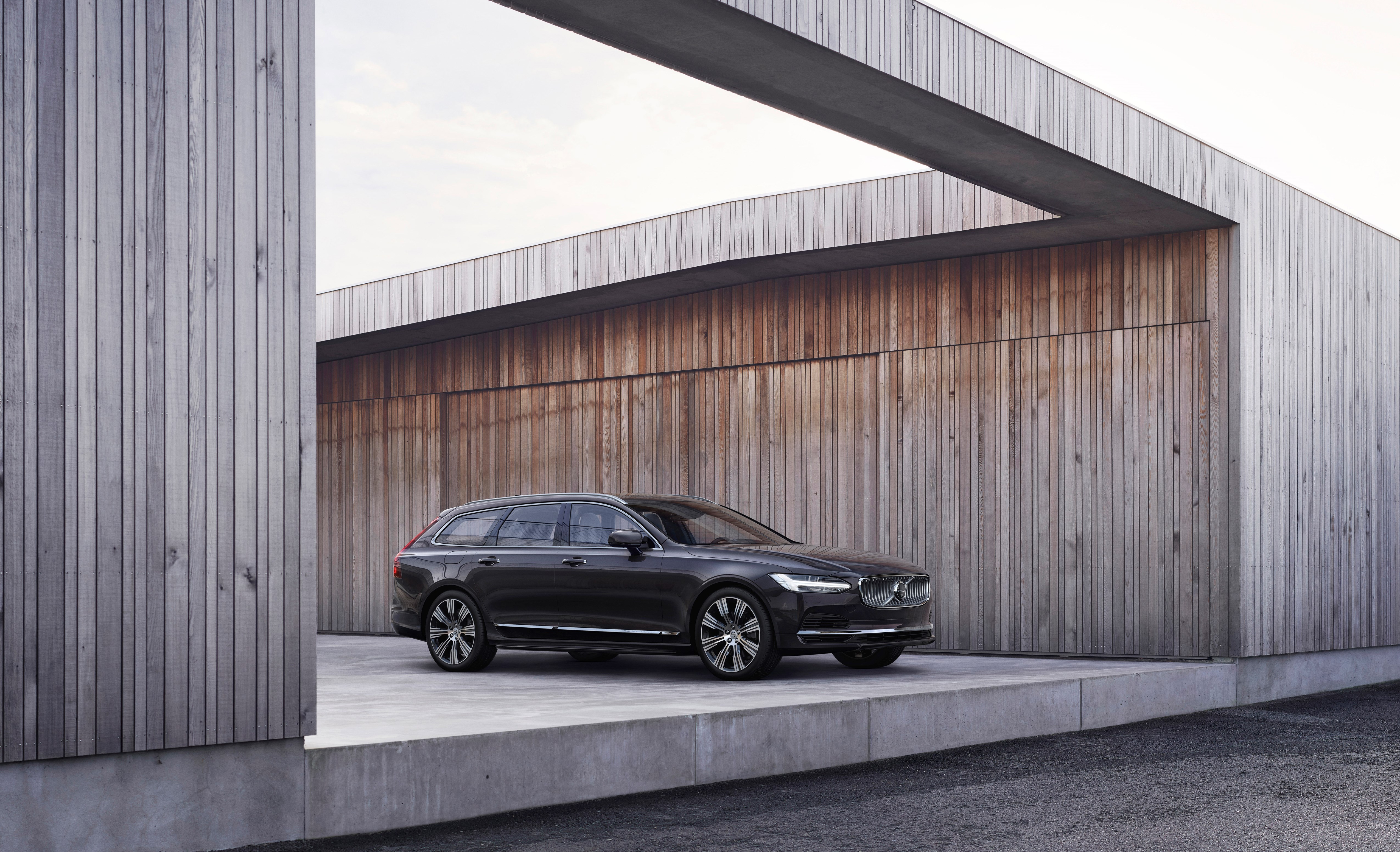
Volvo V90 Recharge
This is not a retro car, although in the context of the contemporary car market, the estate car format has become rather old-fashioned. The alternative is the ubiquitous SUV, a genre that Volvo does rather well with the XC40, XC60 and XC90. But estate cars – or wagons – are where the company’s heritage lies, so it’s fitting that one of its flagship products remains firmly wedded to the genre.
The V90 (V for Versatile) is now available as a ‘Recharge’ plug-in hybrid model. Despite Polestar’s enthusiastic embrace of electrification, Volvo itself is lagging slightly behind. Right now, the only fully electrified Volvos on the market are the XC40 and the forthcoming C40; the midsize and larger models like S60, V60, XC60, XC90, S90 and V90 are all too old to be efficiently electrified. Instead, the brand has hybridised its fleet.
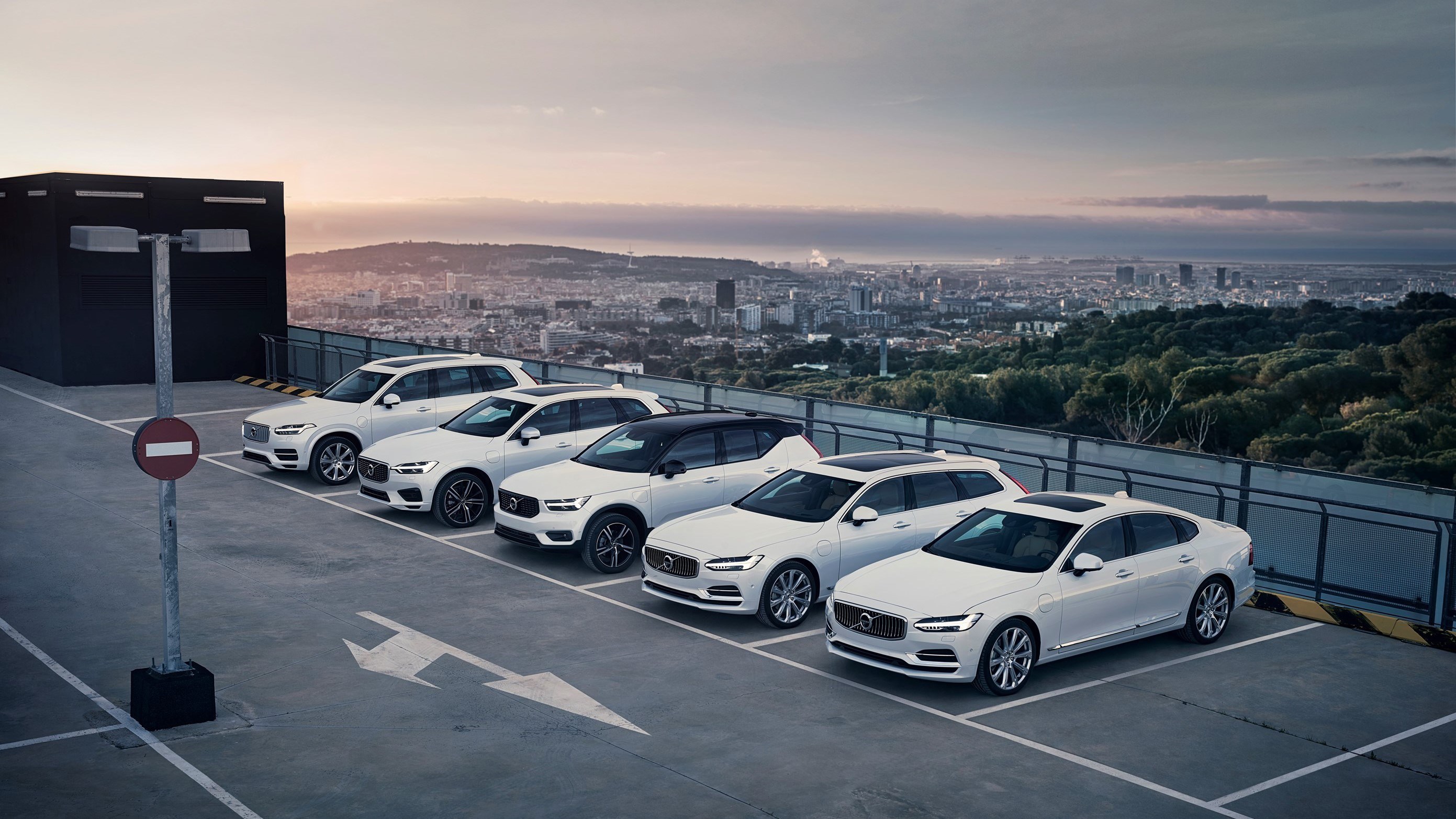
Volvo's Plug-In Hybrid line-up
Like any plug-in hybrid, the V90 Recharge can be run for short distances on full electric power. The V90 promises nearly 53 miles of electric range. Given the average UK driver does 131 miles per week (the figure is 259 miles per week in the USA), then it’s not impossible for a charger-equipped household to run this car as an EV for the vast majority of the time. Like all hybrids, the Recharge system works best when both kinds of engine work together.
Volvo is seemingly alone in abandoning the unnecessary theatre around performance and ‘sport’ driving, but it’s not missed here. This is a big, comfortable car, with architectural levels of space, and a satisfyingly long-lasting feel to every control and surface. Even the touchscreen is well thought-out and easy to use, despite being a few years off the pace in terms of technology.
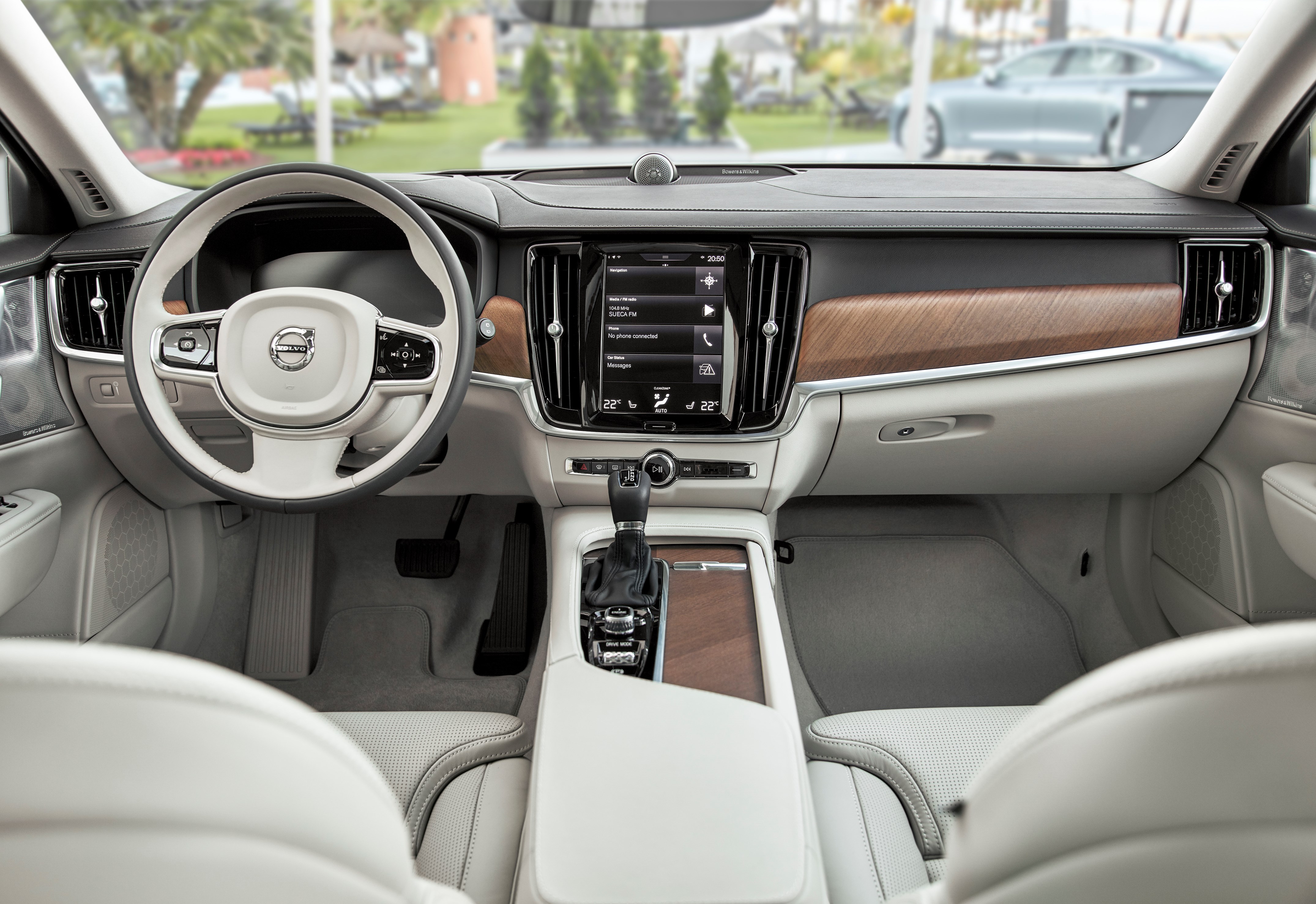
V90 interior
Having Google effectively built into the car certainly helps, as the tech giant’s Assistant is far smarter than all the other in-car intelligences put together. However, this approach might alienate diehard fans of certain other mobile operating systems. Safety is also baked into this company’s DNA, although the newest innovations are systems that prevent crashes from happening in the first place, rather than the protection you’re afforded should the worst happen. The latter tends to be taken for granted, while the former demands intensive research and technological know-how. For the driver, this means a forest of sensors, scanning every nook and cranny of your surroundings for errant cyclists or wayward pedestrians. It’s a credit to the engineers that the V90 never lulls you into a false sense of security; these extra eyes work best to supplement your own.
Wallpaper* Newsletter
Receive our daily digest of inspiration, escapism and design stories from around the world direct to your inbox.
The V90’s enduring physical qualities translate very nicely into the contemporary image of Scandinavian design and culture, an association the company plays up wherever possible. You can hardly blame it; after slow design, slow food, and slow architecture, Volvo is probably the best example of ‘slow motoring’ there is, not that any other car makers are clamouring to make this association. But you know what we mean; slow is a synonym for sustainable and Volvo has aggressive in-house plans to become a fully circular business by 2040.
Volvo Concept Recharge
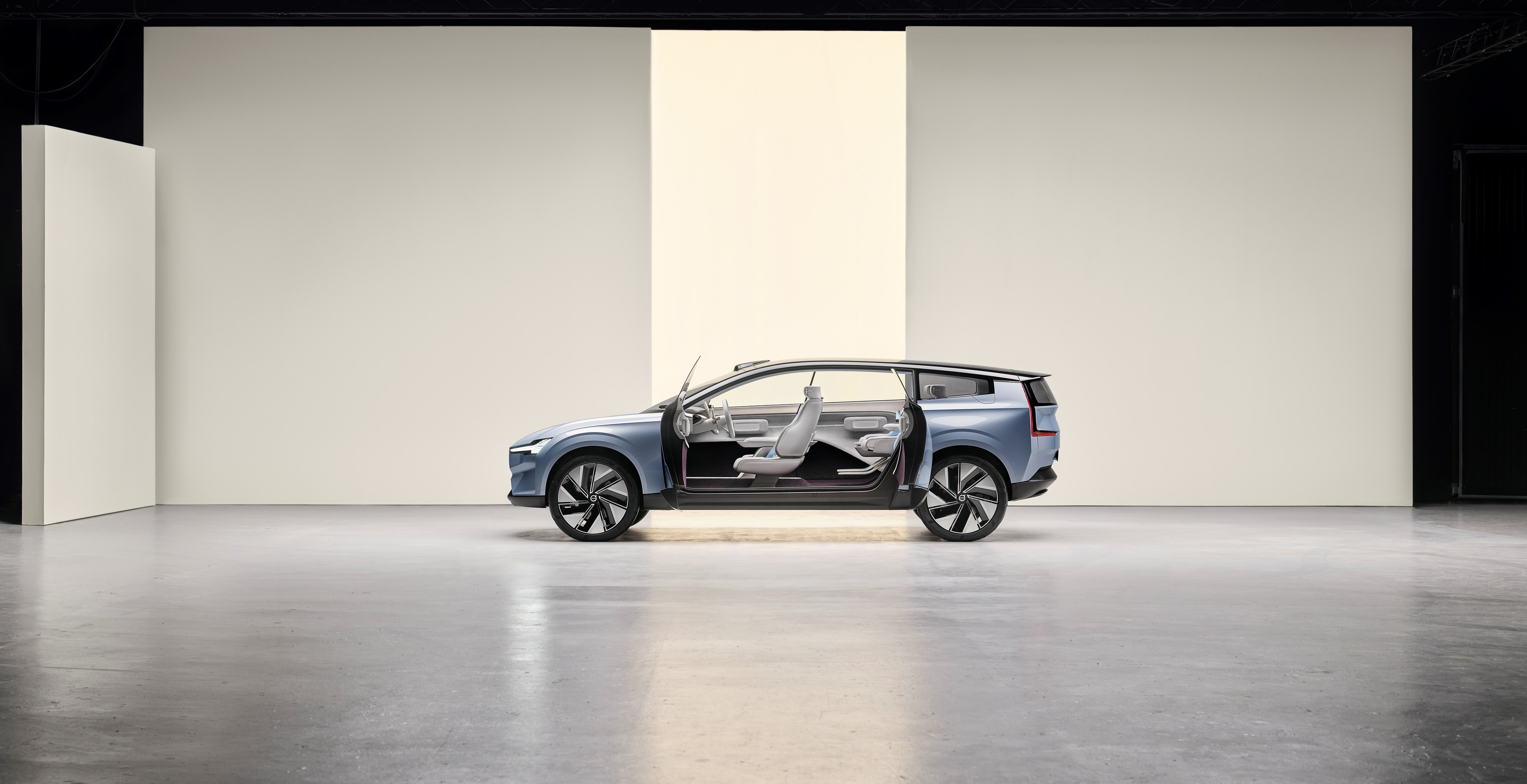
Volvo Concept Recharge
An indication of how Volvo’s signature appearance might evolve to meet these objectives is the Concept Recharge, a concept car that represents both future form language and how design can alter a car’s lifetime environmental impact.
Halfway between an SUV and an estate, the Volvo Concept Recharge is kitted out in sustainable materials (including Swedish wool, flax composite, and a new Volvo-invented leather replacement material called Nordico, made from sustainably managed forests in Sweden and Finland). The flax composite also forms some of the body panels, while even the Pirelli tyres are 94 per cent free of fossil fuels.
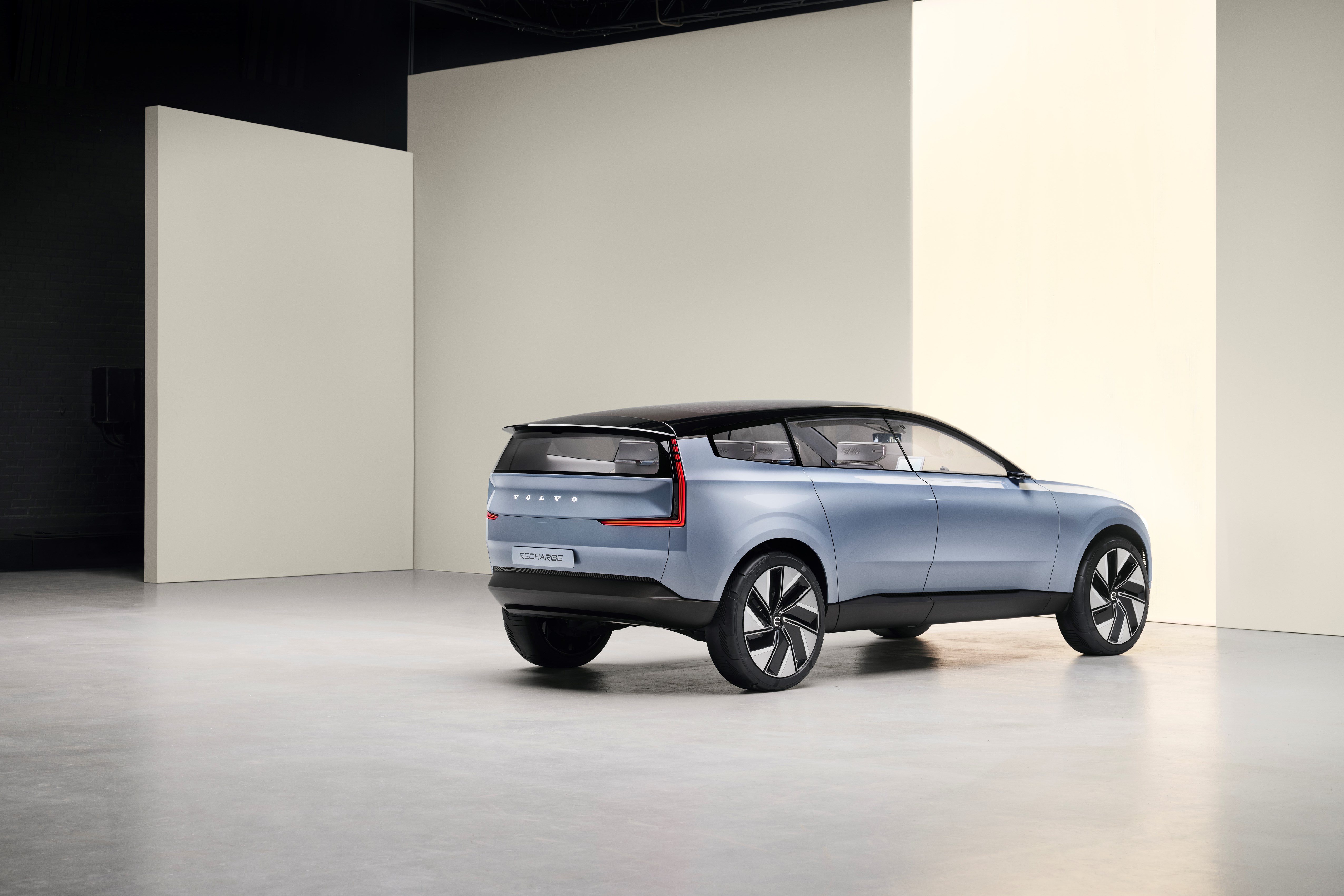
Volvo Concept Recharge
Concept Recharge also makes a decent fist of streamlining the notoriously boxy SUV profile, with a lower roofline, less aggressive styling, and an aerodynamically efficient chopped tail. The flat floor allows for an expansive interior, so it matches the cavernous Volvos of old, while all the efficiencies help bolster the range and lower the environmental impact.
Volvo has been making cars that last longer and go further for 94 years, helping cement an enviable image of security and reliability. As we zoom into the electric era, slow and steady could still come out ahead.
INFORMATION
Volvo V90 Hybrid, from £57,525, model as tested, £62,750
Jonathan Bell has written for Wallpaper* magazine since 1999, covering everything from architecture and transport design to books, tech and graphic design. He is now the magazine’s Transport and Technology Editor. Jonathan has written and edited 15 books, including Concept Car Design, 21st Century House, and The New Modern House. He is also the host of Wallpaper’s first podcast.
-
 In Wales, Michelin-starred Gorse celebrates the country’s abundant larder
In Wales, Michelin-starred Gorse celebrates the country’s abundant larderGorse is the first Michelin-starred restaurant in Cardiff, putting Welsh cuisine on the map. We speak with chef and founder Tom Waters about the importance of keeping culinary traditions alive
By Tianna Williams
-
 Ludmilla Balkis’ organic, earthy ceramics embody the Basque countryside
Ludmilla Balkis’ organic, earthy ceramics embody the Basque countrysideThe sculptor-ceramicist presents a series inspired by and created from found natural objects in a New York exhibition
By Anna Solomon
-
 At this secret NYC hangout, the drinks are strong and the vibes are stronger
At this secret NYC hangout, the drinks are strong and the vibes are strongerFor People's bar, Workstead serves up a good time
By Anna Fixsen
-
 Mercedes-Benz previews its next-gen people mover with an ultra-luxury EV concept
Mercedes-Benz previews its next-gen people mover with an ultra-luxury EV conceptThe Mercedes-Benz Vision V Concept is an art deco picture palace on wheels, designed to immerse passengers in parallel worlds as they travel
By Jonathan Bell
-
 2025 Seoul Mobility Show report: all that's new and notable
2025 Seoul Mobility Show report: all that's new and notableOpened at a time of high national drama, the 2025 Seoul Mobility Show has gone on to underscore Korea’s place at the cutting edge of the auto industry. Guy Bird was there
By Guy Bird
-
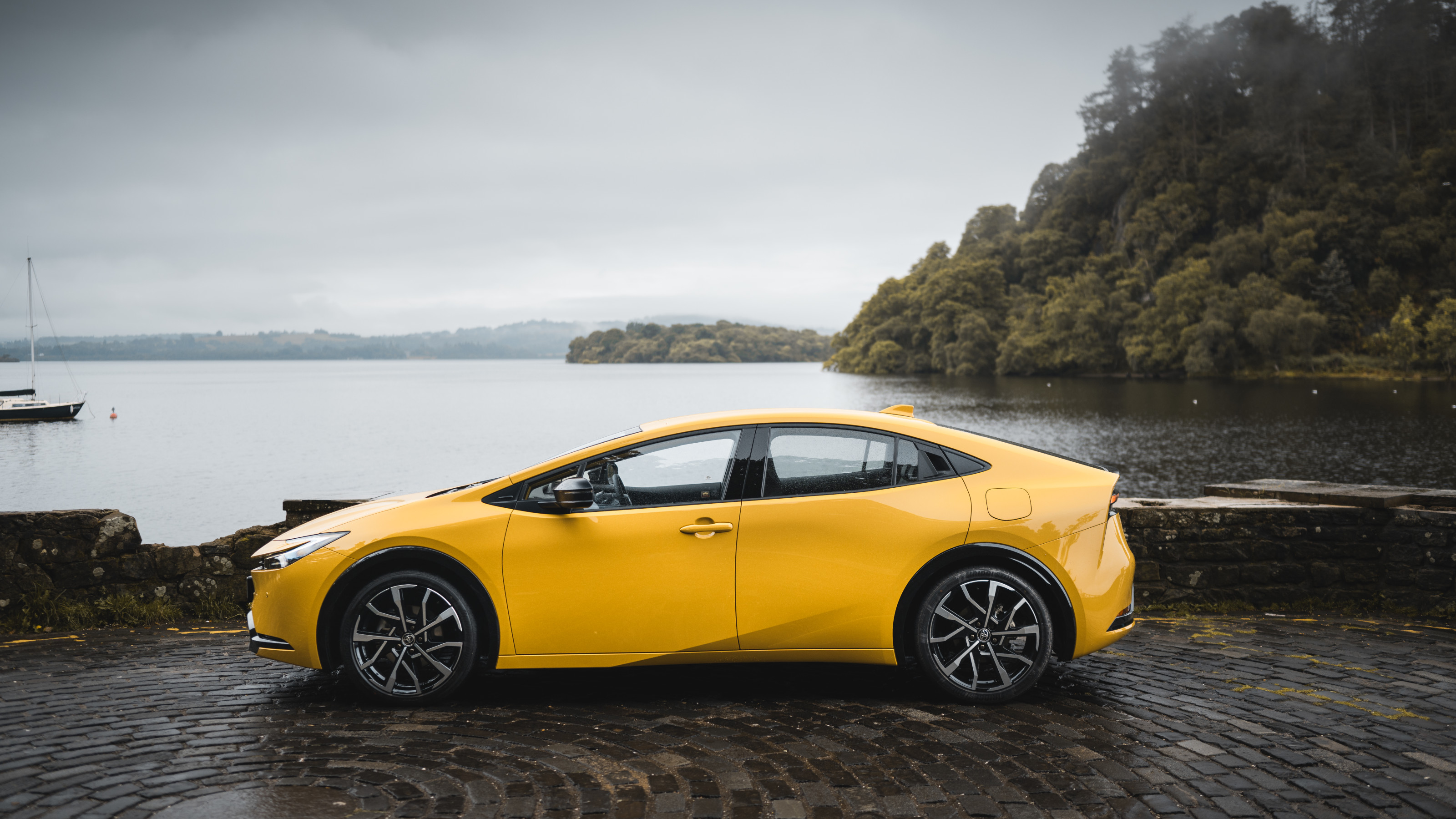 Why the Toyota Prius is the stealthiest and most discreet automotive choice you can make
Why the Toyota Prius is the stealthiest and most discreet automotive choice you can makeThe billions that Toyota poured into hybrid development has paid off. We sample the stylish fifth-generation Prius and reckon it’s the best yet
By Jonathan Bell
-
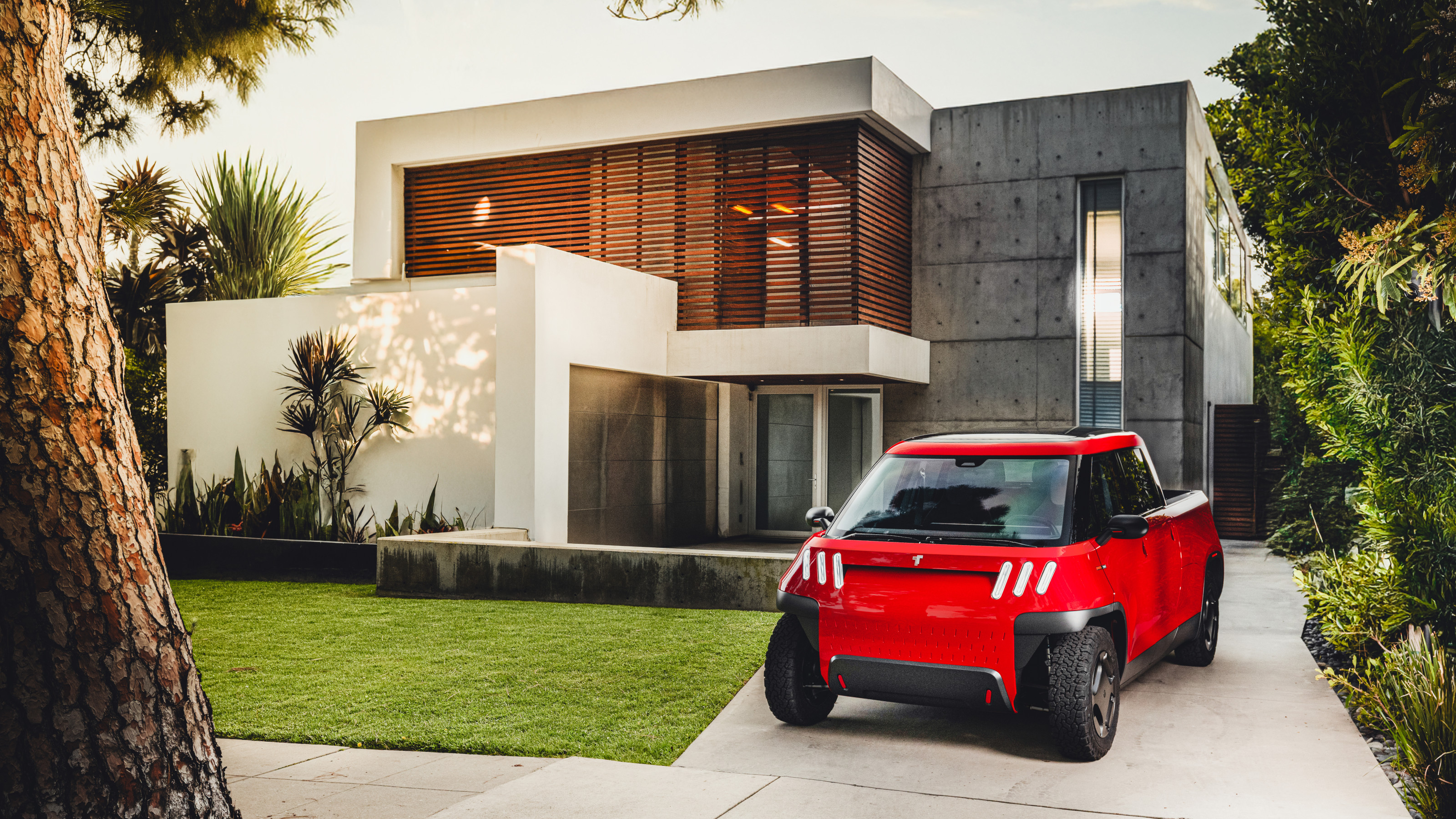 Meet the final drivable prototype of the Telo MT1 pickup truck, shaped by Fuseproject
Meet the final drivable prototype of the Telo MT1 pickup truck, shaped by FuseprojectThe Telo MT1 is a modestly scaled EV that turns the traditional all-American approach to pick-up truck design on its head
By Jonathan Bell
-
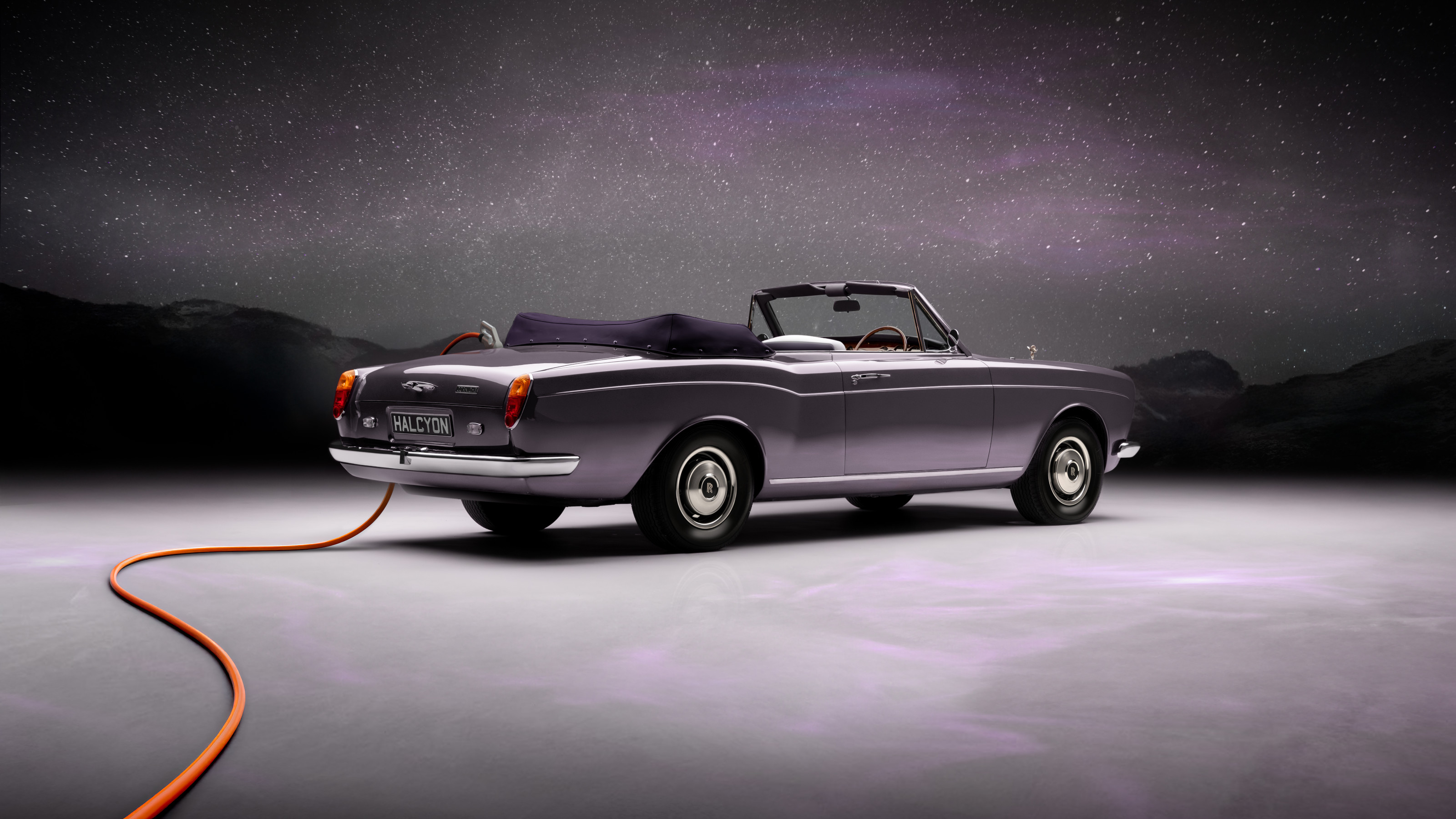 EV start-up Halcyon transforms a classic 1970s Rolls-Royce into a smooth electric operator
EV start-up Halcyon transforms a classic 1970s Rolls-Royce into a smooth electric operatorThis 1978 Rolls-Royce Corniche is the first fruit of a new electric restomod company, the Surrey-based Halcyon
By Jonathan Bell
-
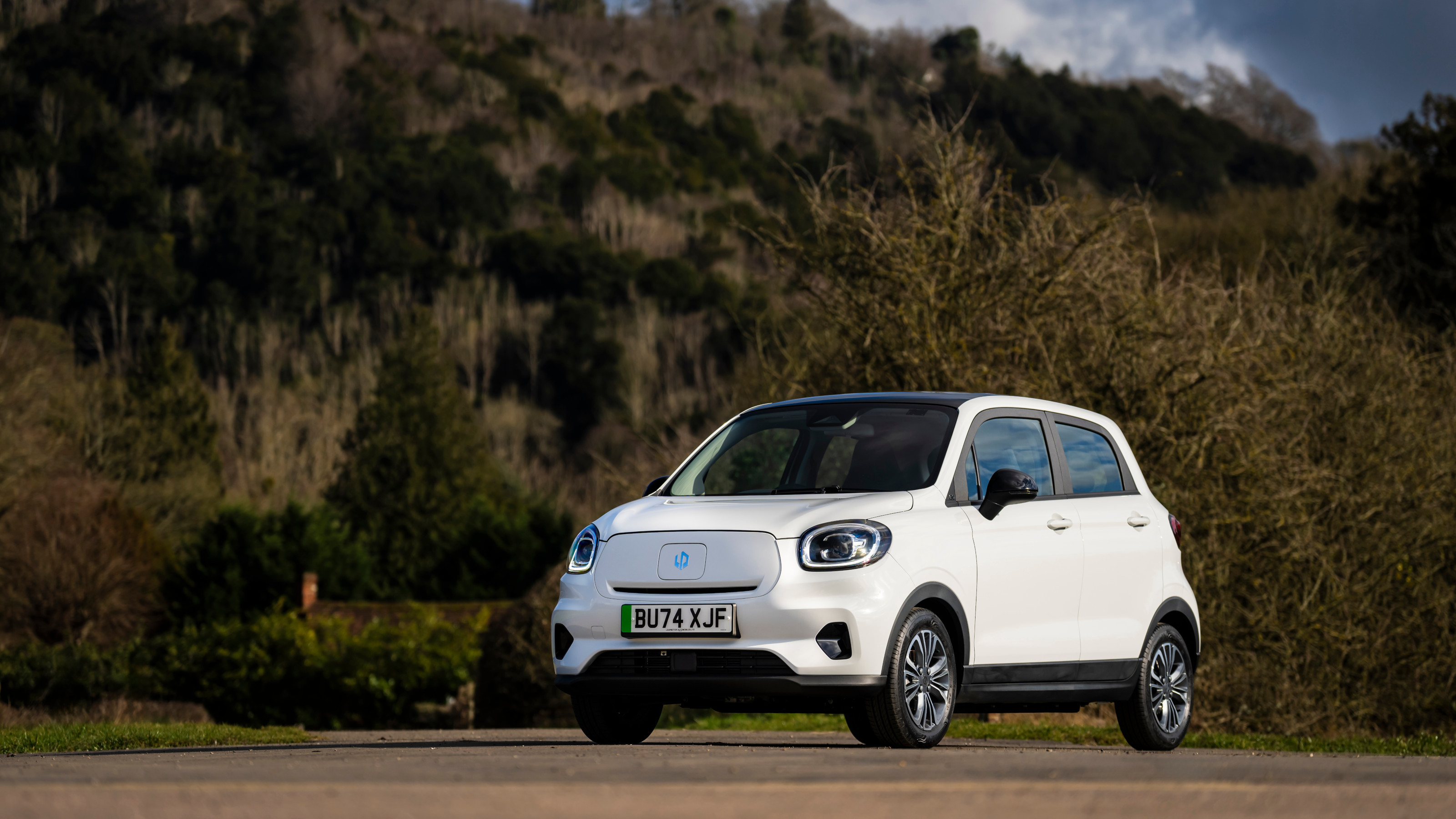 China’s Leapmotor pounces on the European car market with its T03 city car and C10 SUV
China’s Leapmotor pounces on the European car market with its T03 city car and C10 SUVLeapmotor’s tiny electric city car could be just the tonic for cramped urban Europe. We sample the T03 and its new sibling, the fully loaded C10 SUV, to see if the company’s value proposition stacks up
By Jonathan Bell
-
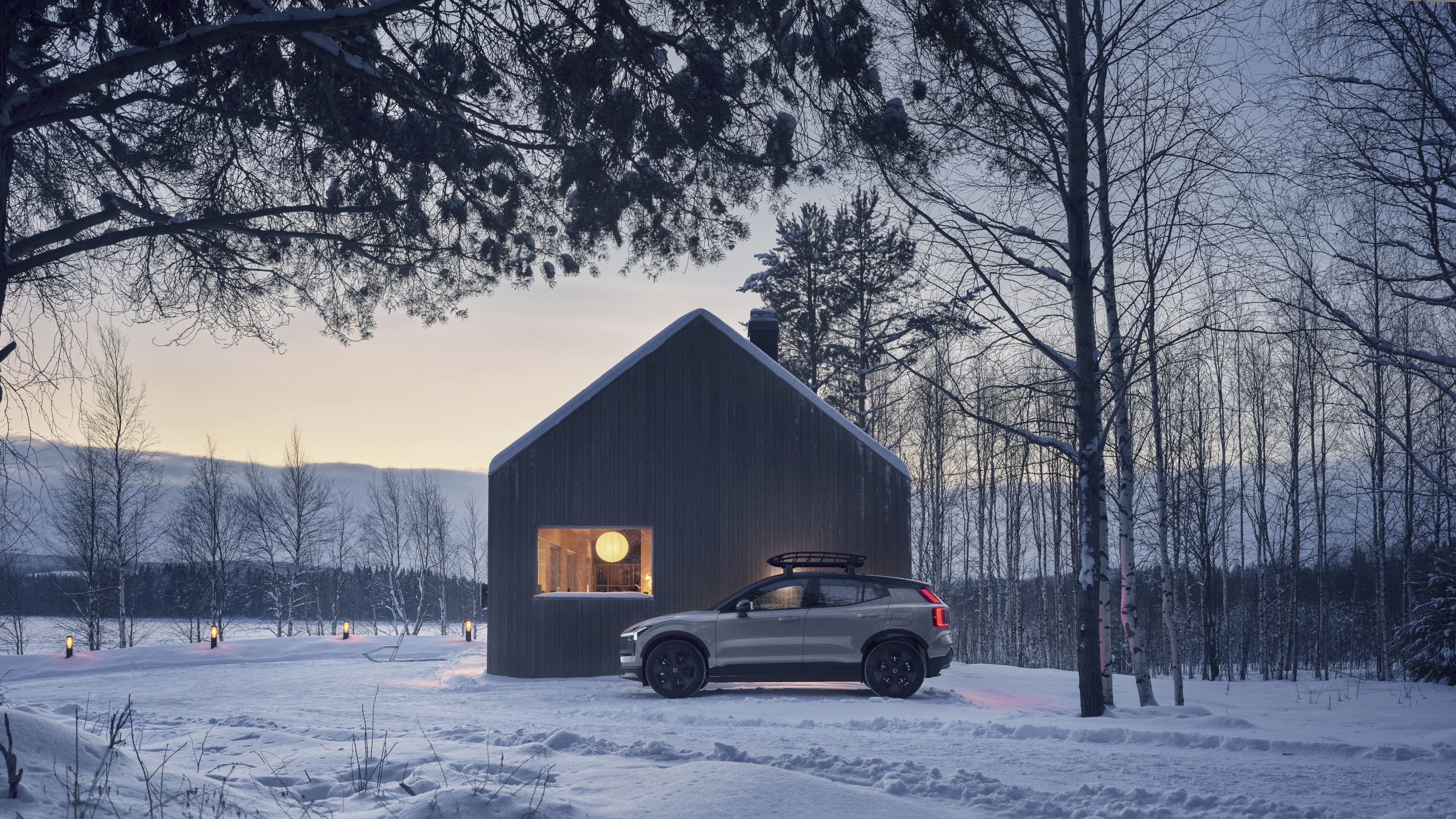 Volvo takes to the snowy Swedish wilderness to reveal its new EX30 Cross Country
Volvo takes to the snowy Swedish wilderness to reveal its new EX30 Cross CountryThe Volvo EX30 Cross Country is a chunkier sibling for one of our favourite small electric cars
By Jonathan Bell
-
 Wallpaper* takes the wheel of the Bentley Blower Jnr for a rich automotive experience
Wallpaper* takes the wheel of the Bentley Blower Jnr for a rich automotive experienceHedley Studios has shrunk the mighty Bentley Blower into this all-electric, road-legal barnstormer. We take it to the streets of London
By Jonathan Bell